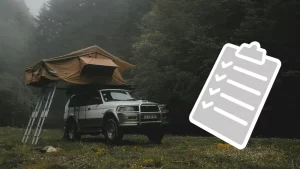As the popularity of rooftop tents continues to grow among outdoor enthusiasts, many potential buyers find themselves confronted with a myriad of options across a range of price points. While it can be tempting to go for the cheapest option available, discerning the true value for money in the world of rooftop tents requires careful consideration. In this article, we’ll explore how to evaluate price, assess value for money, and understand the concept of return on investment when looking for your ideal rooftop tent.
PRICE VS. VALUE. WHAT’S THE DIFFERENCE?
Price is the amount of money you’ll need to part with to acquire a rooftop tent, while value is a more nuanced concept that encompasses the quality, features, durability, and overall user experience associated with that tent. Before settling for a product solely based on its price tag, it’s crucial to analyse the features and benefits it offers. A low price might be appealing, but if the tent lacks essential qualities or requires frequent repairs, it could end up costing you more in the long run.
IDENTIFY YOUR NEEDS
To assess where your money will be best spent, you first need to understand your specific needs and camping style. Are you a weekend warrior, seeking quick escapes into nature, or do you plan to embark on extended overland adventures? Different rooftop tents are designed for different camping styles. Soft shells tend to be lighter and more compact, while hard-shell models offer durability and quicker set-ups, perfect for frequent adventurers.
Identifying your needs will help you narrow down the options and allow for a clearer comparison of value. For example, if you camp regularly and require a tent that can endure harsh conditions, investing in a more robust model may save you money over time.
FEATURES TO CONSIDER
When comparing rooftop tents, the following features will have a significant impact on value for money:
Material Quality
The fabric and construction materials affect insulation, waterproofing, and durability. Higher-quality materials may incur a higher initial cost, but they are likely to outlast their cheaper counterparts.
Ease of Set-up
Some models prioritise design simplicity, allowing for quicker set-ups and take-downs. If you’re planning to move frequently during your trips, this feature can greatly enhance your overall experience.
Comfort
Comfort is often subjective, but a good night’s sleep in the great outdoors can make or break your camping adventure.
Warranty and Support
A strong warranty can act as a safety net, ensuring you get value for your money should something go wrong. Brands that offer extended warranties and reliable customer service reflect their commitment to product quality.
RETURN ON INVESTMENT
Understanding return on investment in the context of rooftop tents involves evaluating the experiences you’ll gain against the initial outlay—not just how much it will be worth if/when you want to sell it. Think about how many trips you might take each year and how a rooftop tent could improve those experiences compared to traditional camping methods or other forms of travel.
If you are planning to embark on several trips per year throughout the seasons, then purchasing a budget tent can be expensive in the long run if it isn’t robust enough or unsuited to consistent poor weather conditions.
Maintaining the value of your rooftop tent will largely come down to ongoing care and regular maintenance when you decide to sell.
CONCLUSION
In conclusion, navigating the world of rooftop tents requires a keen eye for value beyond just the price tag. Understanding your individual needs, assessing the features that matter the most, and calculating your return on investment will ensure that you make a purchase that enhances your outdoor experience while remaining within your budget.
By taking the time to research and evaluate, you’re ultimately investing not just in a product, but in countless adventures and memories to come.







